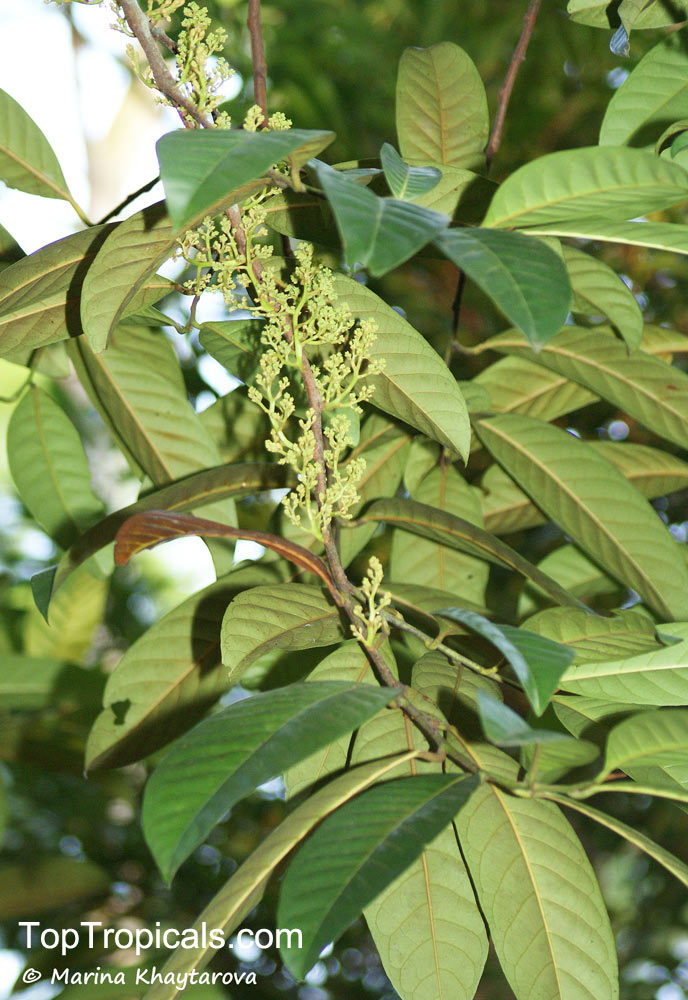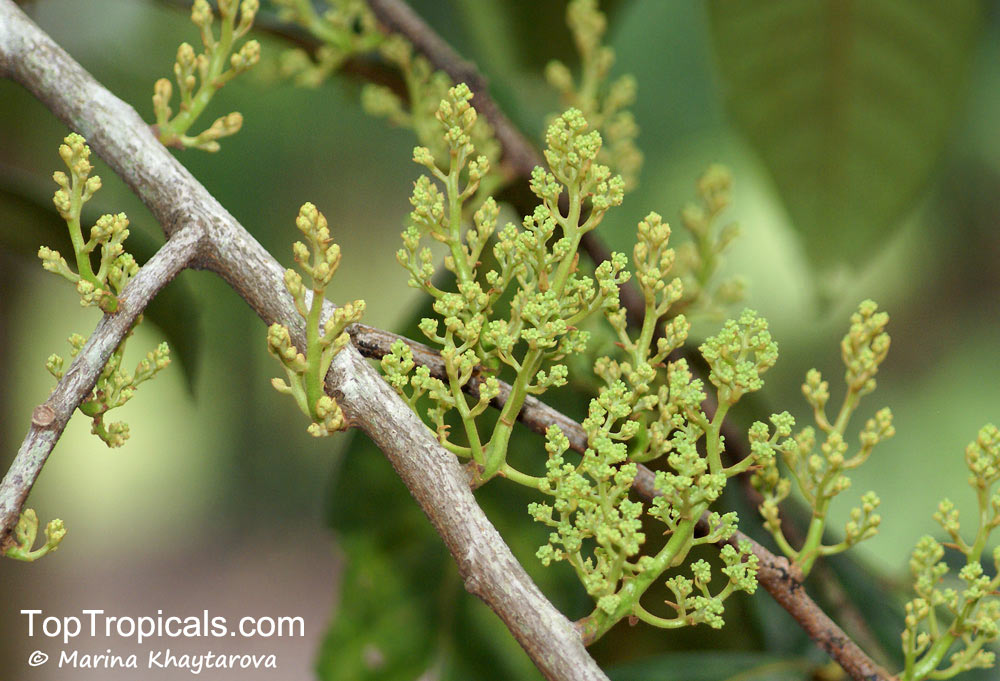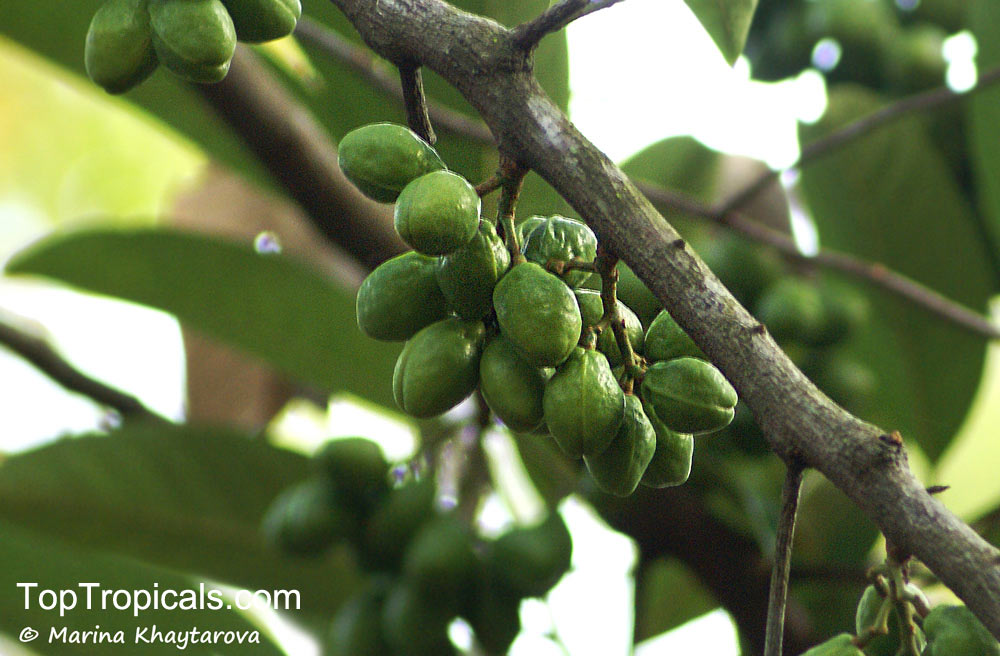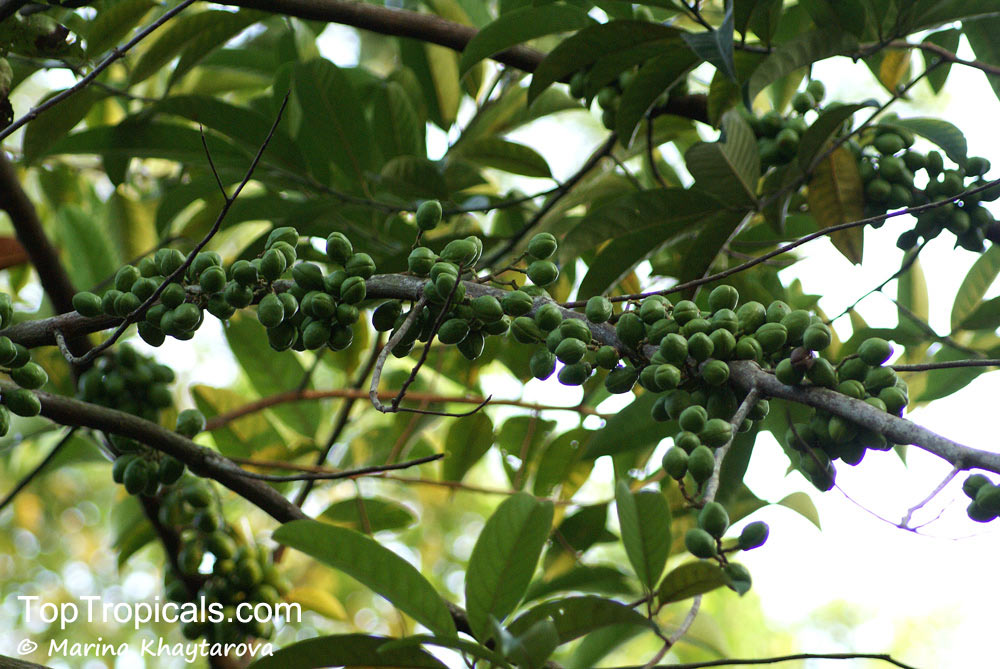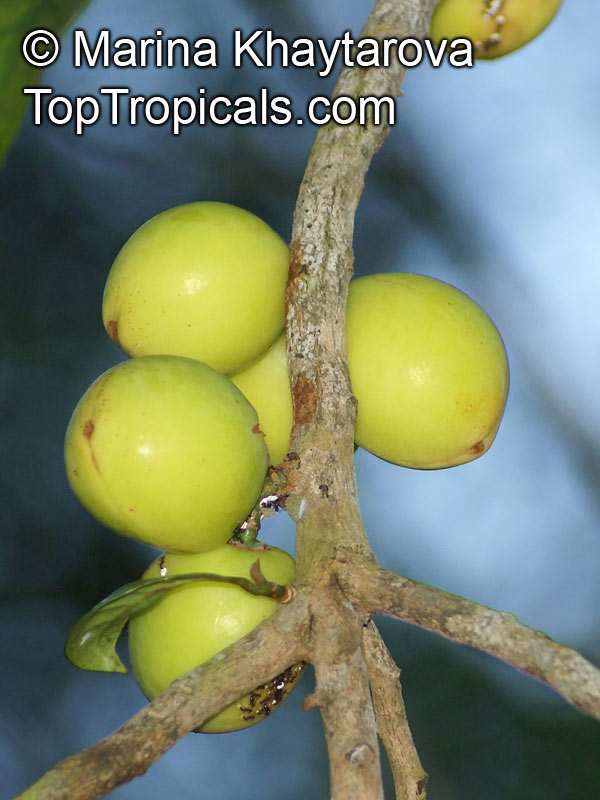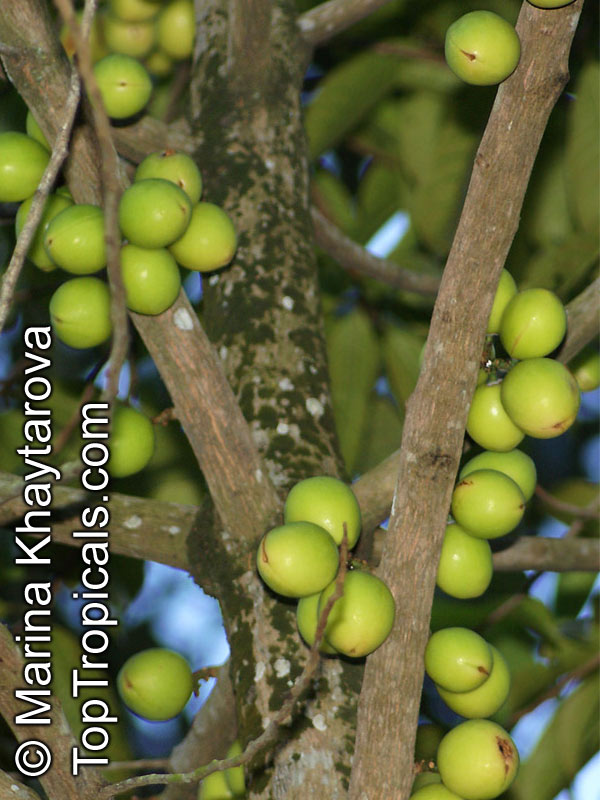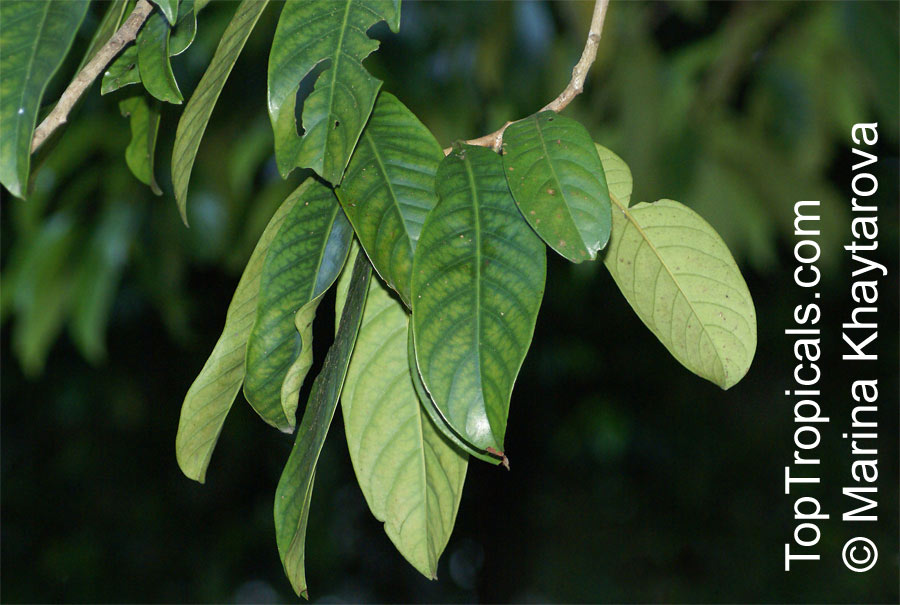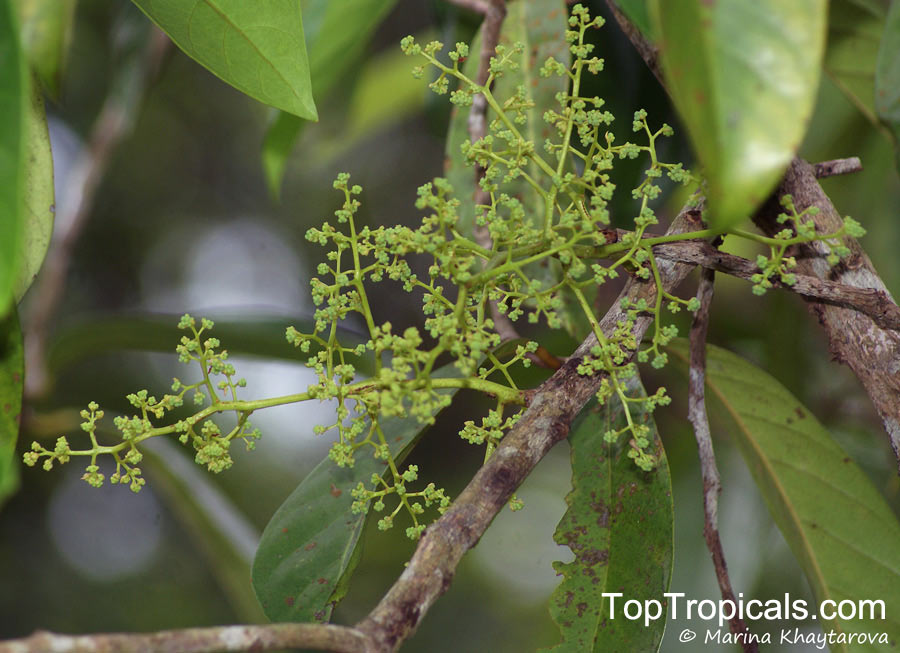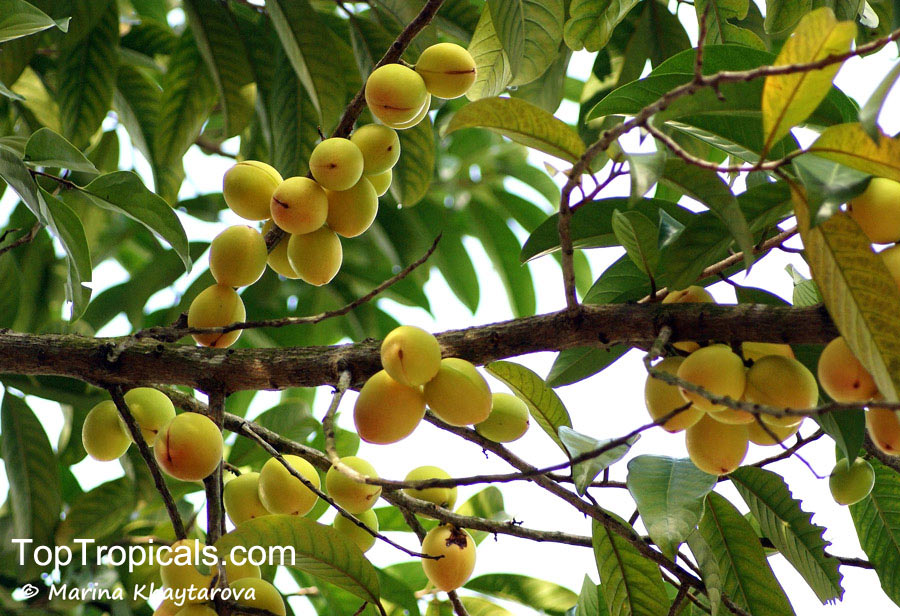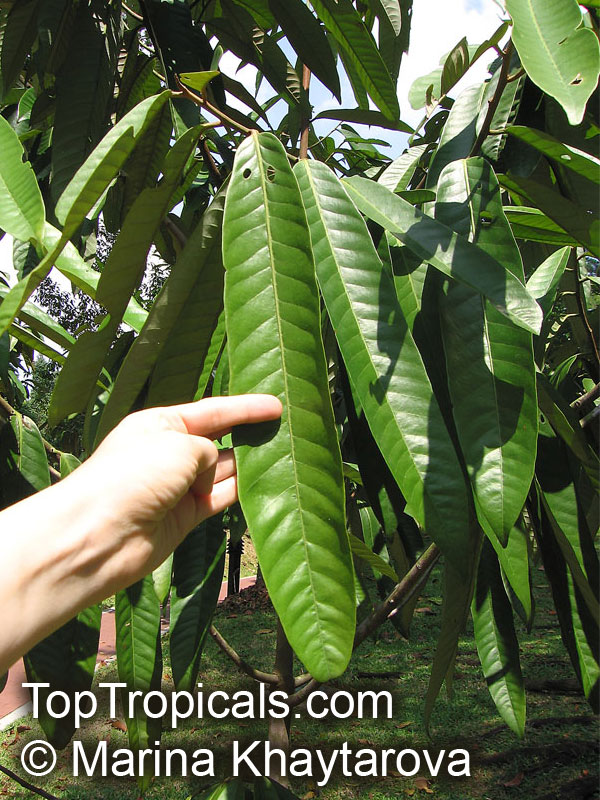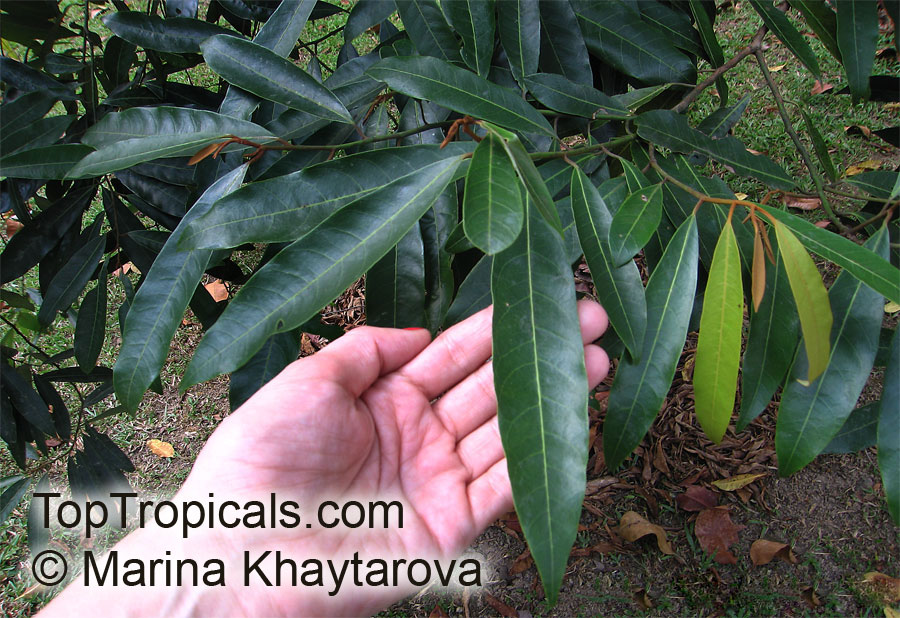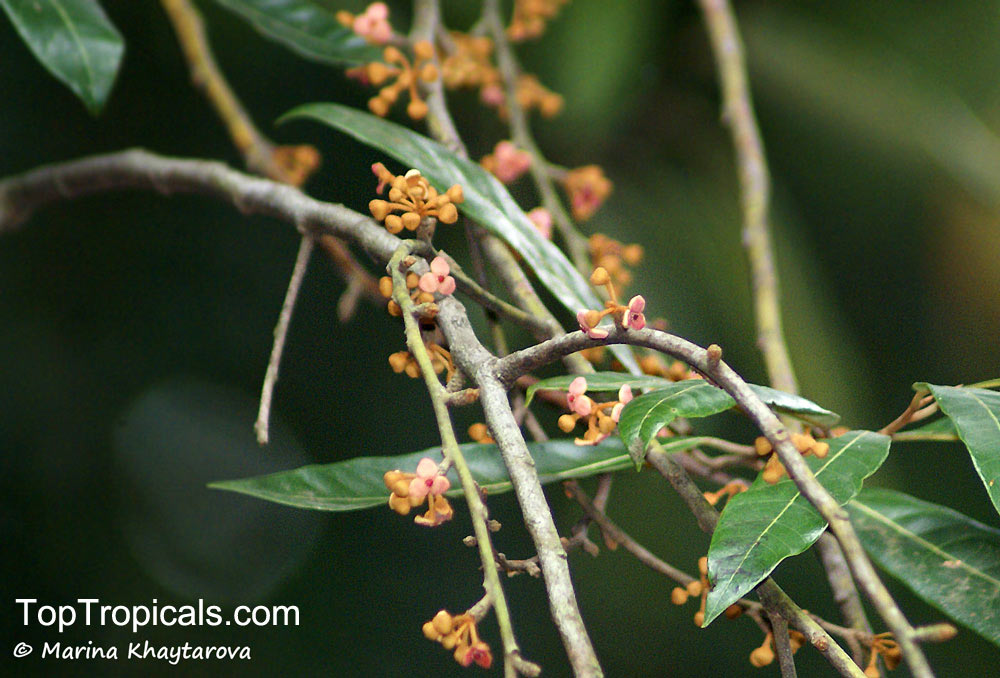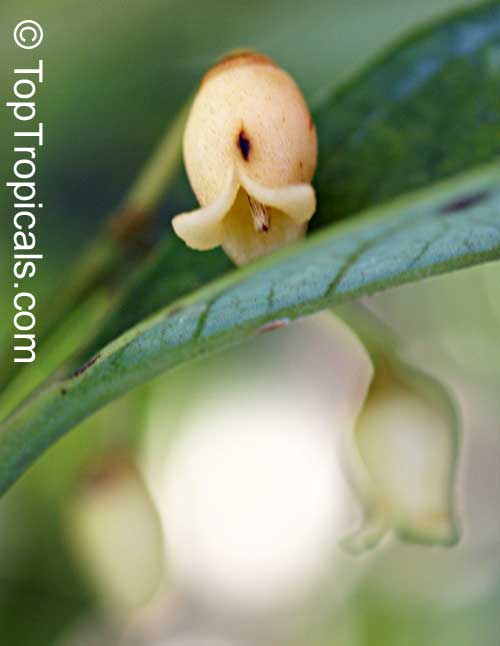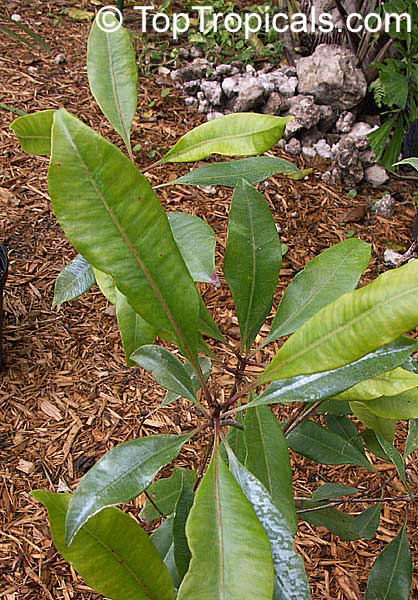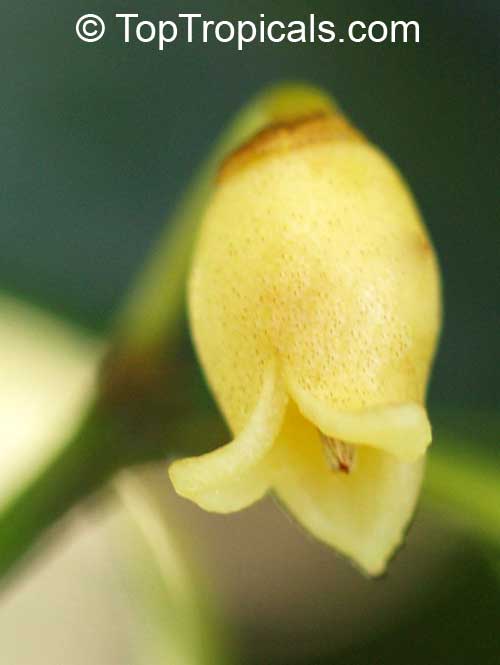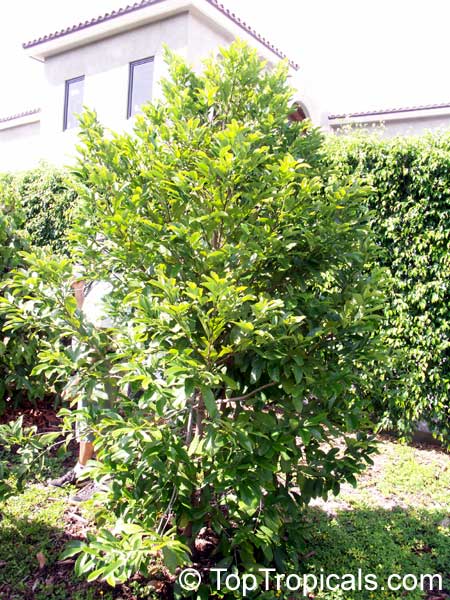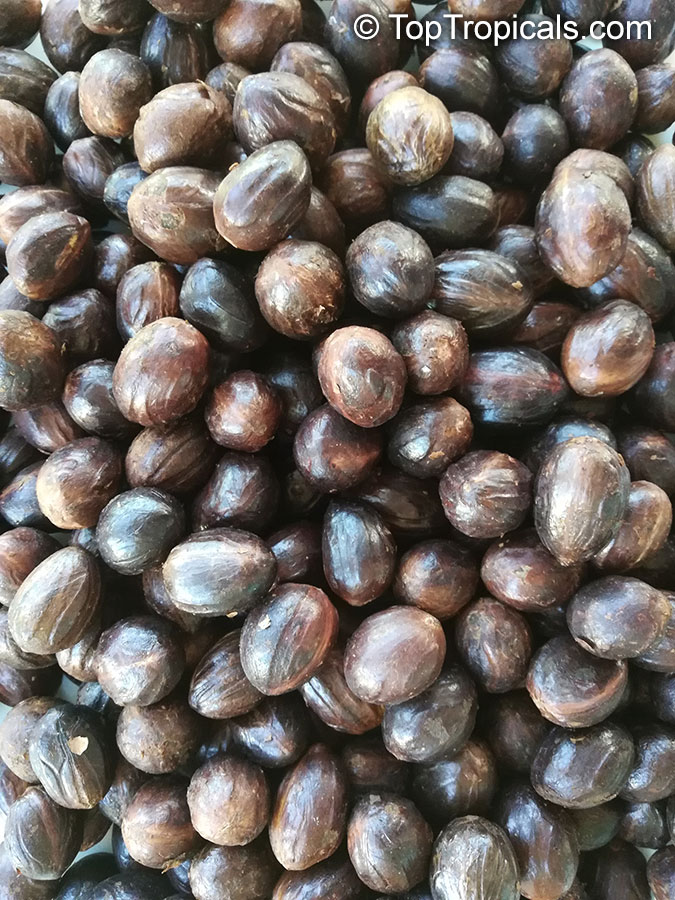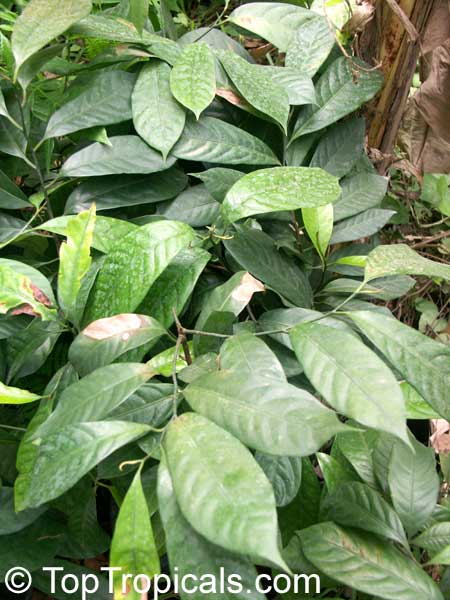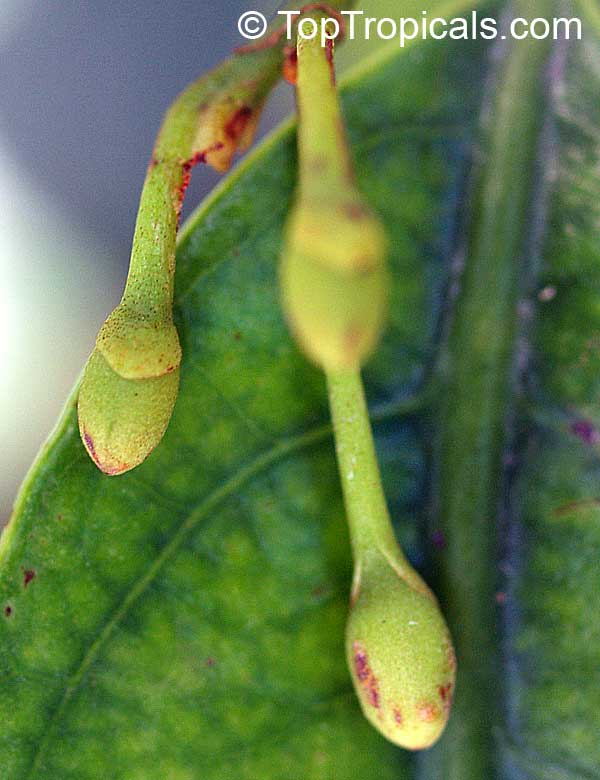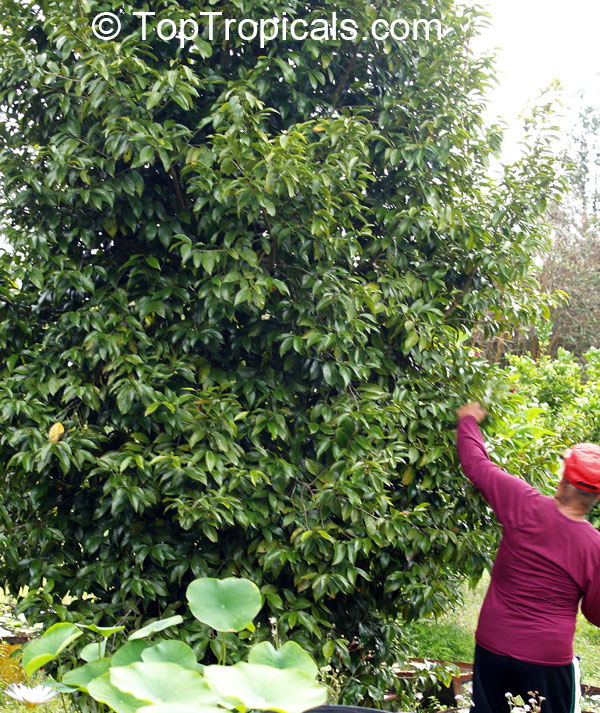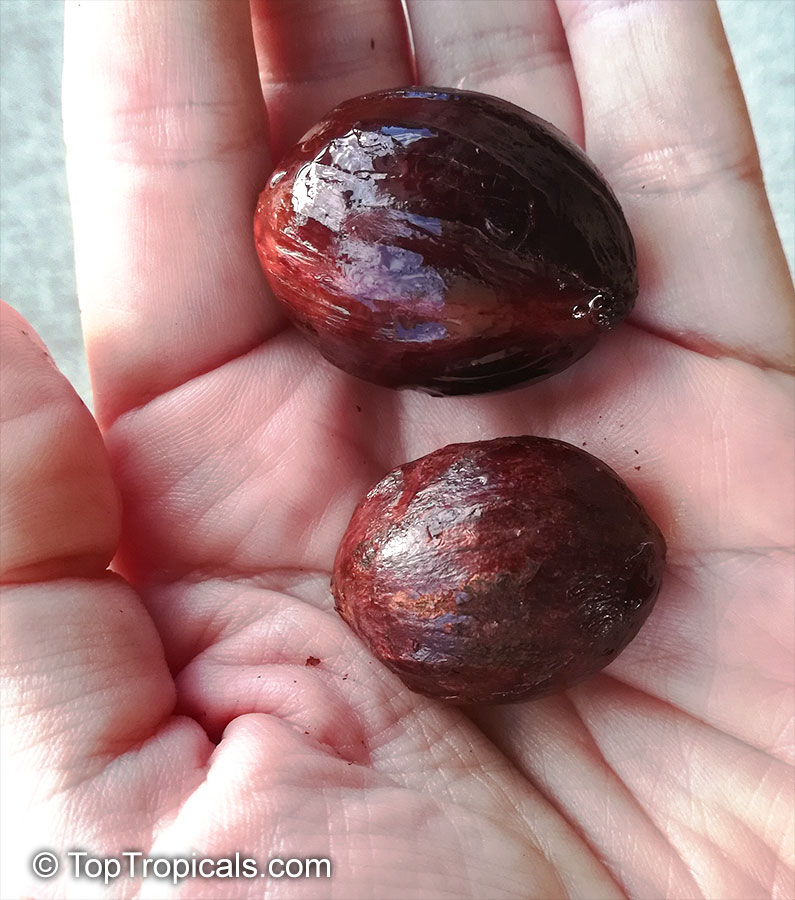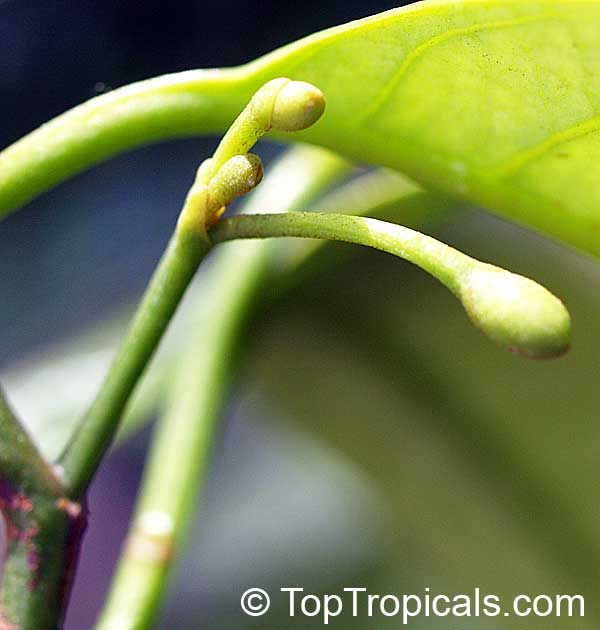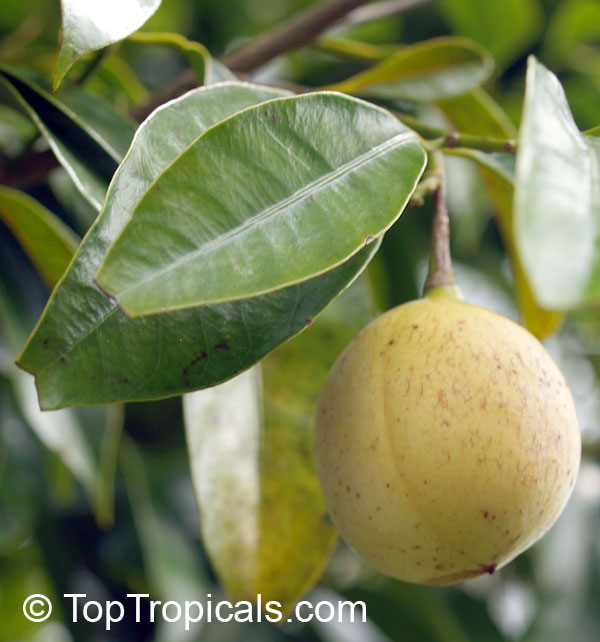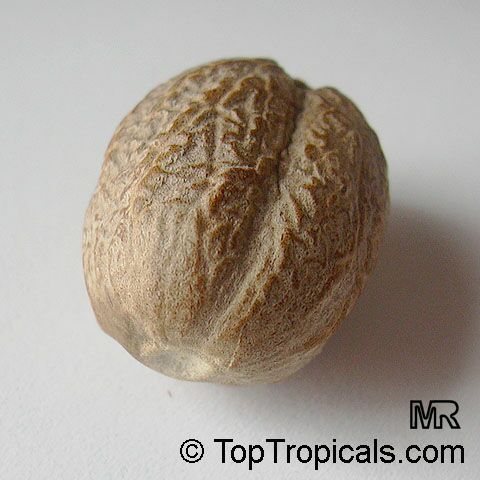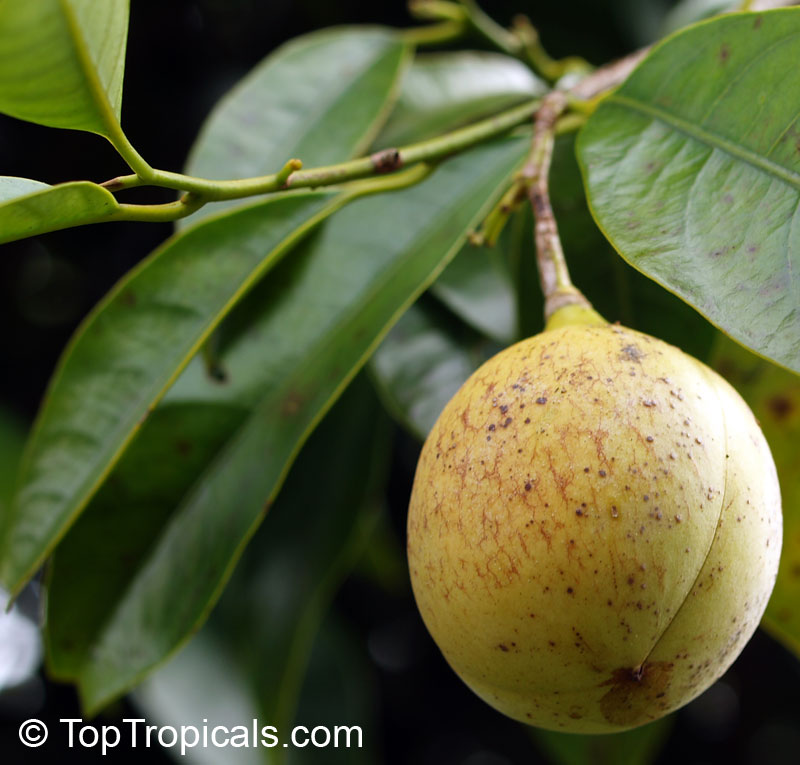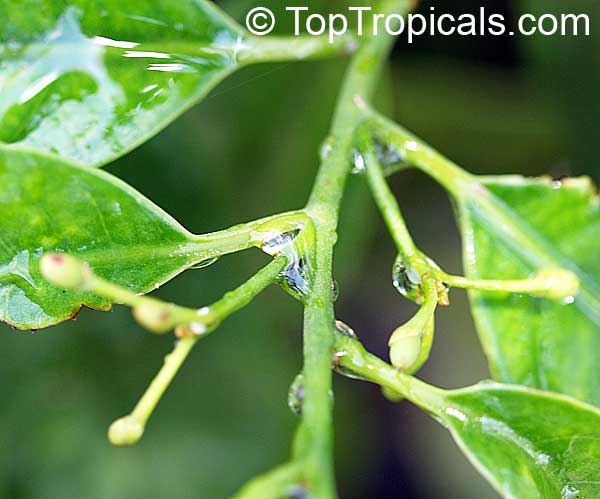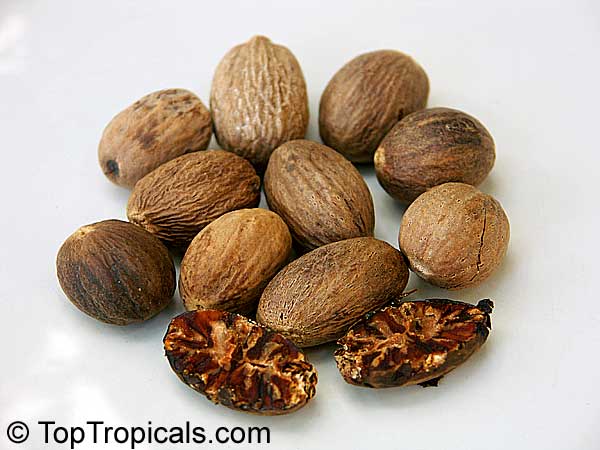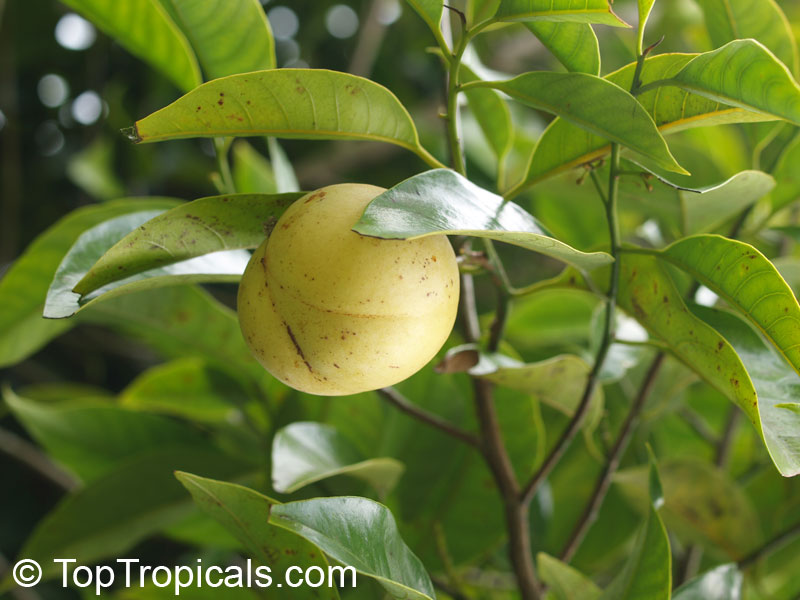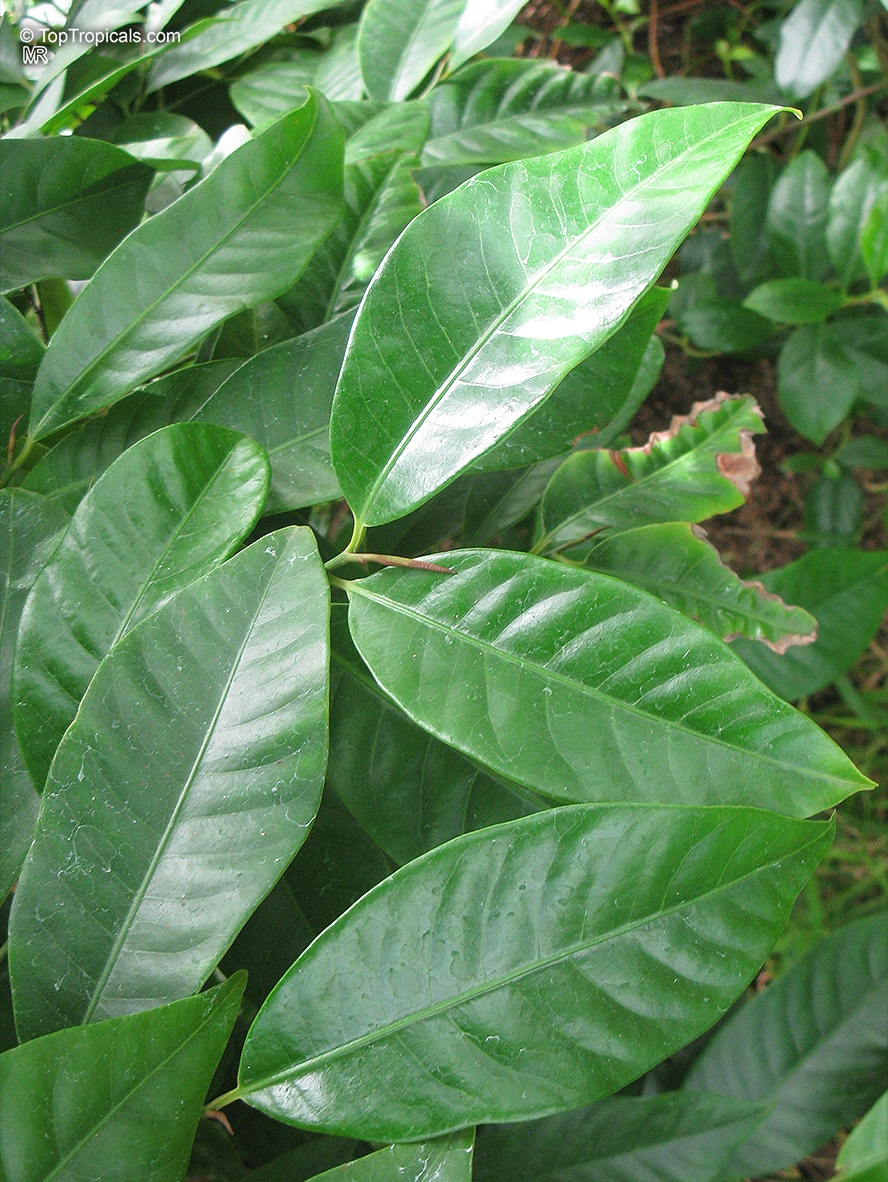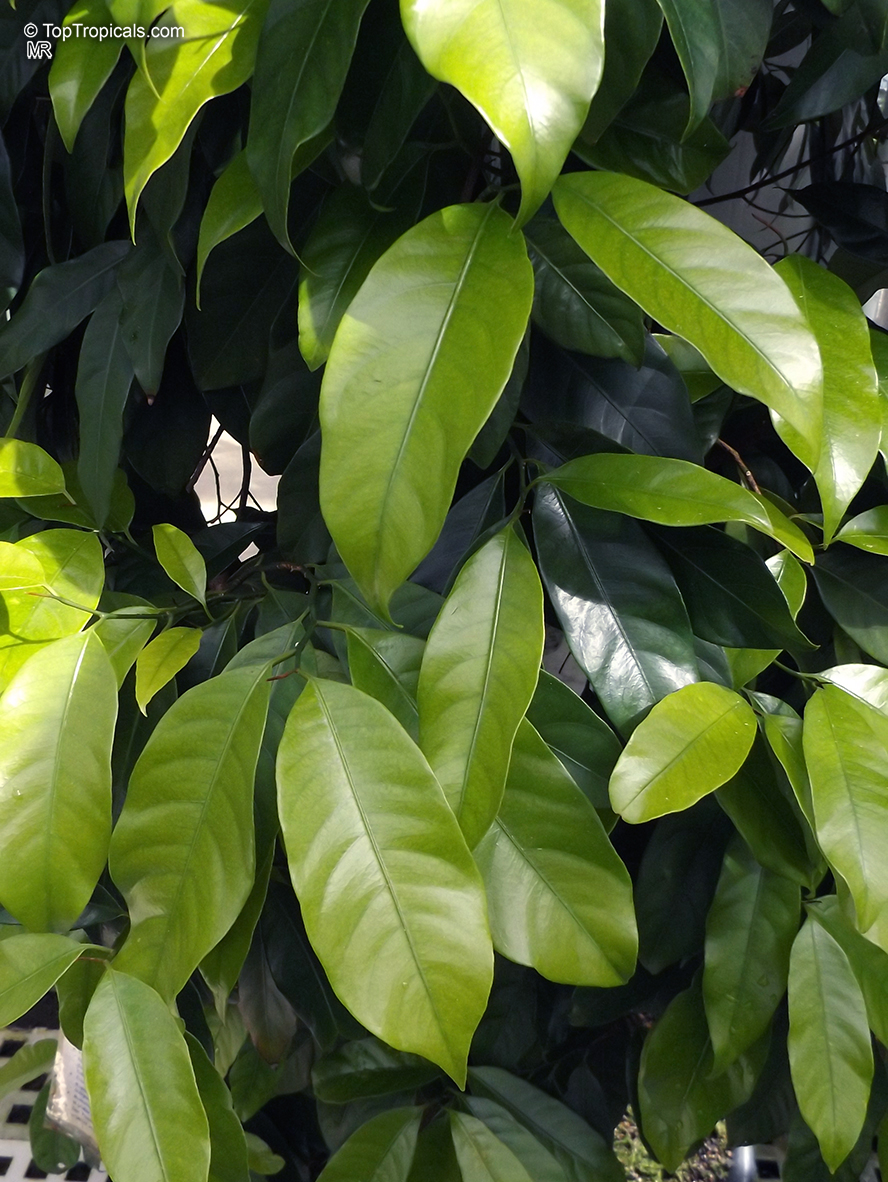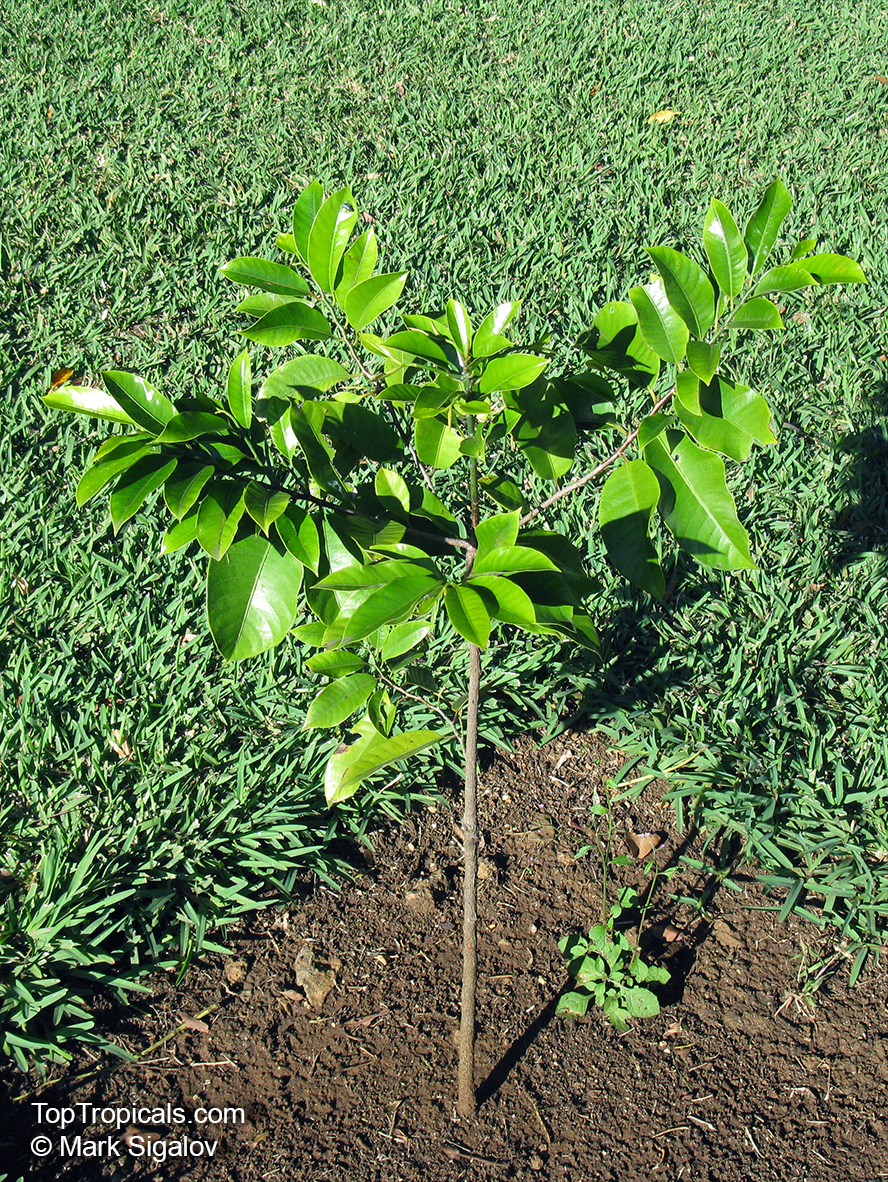Myristicaceae - Botanical Family
Top Tropicals Plant Encyclopedia
| Number of plants found: 4 |
Botanical names: Horsfieldia crassifolia, Myristica crassifolia
Common name: Horsfieldia
Family: Myristicaceae
Origin: Malesia




Botanical names: Horsfieldia sucosa, Horsfieldia bracteosa
Common names: Darah-darah, Kumpang, Pendarahan
Family: Myristicaceae
Origin: Indonesia





Botanical name: Myristica fragrans
Common name: Nutmeg
Family: Myristicaceae
Origin: Moluccas or Spice Islands of Indonesia








Nutmeg is an evergreen tropical tree that can grow up to 65 feet tall. Its fruit is similar to an apricot, and when fully mature, it splits into two halves and exposes a crimson-colored edible pulp surrounding a single seed, the nutmeg. After being harvested, the nutmegs are dried gradually in the sun and turned twice daily for a period of six to eight weeks. They become grayish-brown ovals with furrowed surfaces about 1-1.5 inches long when dried. Nutmeg seeds possess a pleasant fragrance and slightly warm taste, making it a widely used spice. It is often used to flavor different baked goods, meats, sausages, sauces, vegetables, and even eggnog.
The common name nutmeg is sometimes used to refer to other fruits or seeds too. For instance, Jamaica nutmeg is derived from Monodora myristica, the Brazilian nutmeg is from Cryptocarya moschata, the Peruvian nutmeg is from Laurelia aromatica, the Madagaskar nutmeg is from Ravensara aromatica and the California nutmeg is from Torreya californica.
Myristica fragrans, the original nutmeg-producing tree needs full sun, but can also manage in semi-shady places. It requires regular watering for optimum growth. This plant not only has a pleasant scent but is also used for ethnomedical purposes. Each tree can produce up to 1.5kg of nutmeg annually. It grows in USDA zones 10-11 and should be kept at temperatures above 55F. Keep a regular watering schedule and allowing the soil to dry out between waterings. Nutrients can be provided every few months using a mild liquid fertilizer. In winter, reduce water, and if temperatures drop tremendously, put the pot inside or cover it with a protective coating.
Use link to repeat this search:
https://toptropicals.com/cgi-bin/garden_catalog/cat.cgi?search_op=and&keyword_op=and&language=e&family=Myristicaceae
&number=10&no_change_lang=1&user=tt&sale=1&first=0
